
- Pictures of Hessian Fly
- Pictures of Hessian Fly Damaged Wheat
- Hessian Fly Biology and Life Cycle at Various Locations
- Effect of Hessian Fly on Wheat Yield
- Resistance of Wheat Varieties to Hessian Fly
- Effectiveness of Hessian Fly Resistance Genes
- Agronomic Practices That Affect Hessian Fly Populations
- Seed Treatments
- Foliar Insecticides
- Home
Agronomic Practices that Affect Hessian Fly Populations
Crop Rotation
Crop rotation helps reduce the chance of infestation by Hessian flies because the Hessian fly oversummers in wheat stubble. Rotations that prevent new wheat from being planted into or near a previous wheat crop’s stubble will reduce the chances of Hessian fly infestation.
This data set, collected in Alabama in 2009, shows the effects of crop rotation, as well as the effect of distance from oversummering wheat stubble, on Hessian fly populations:
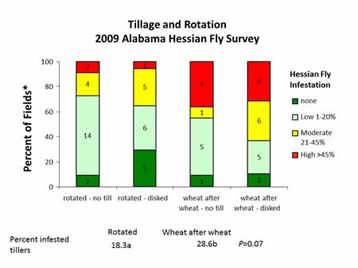
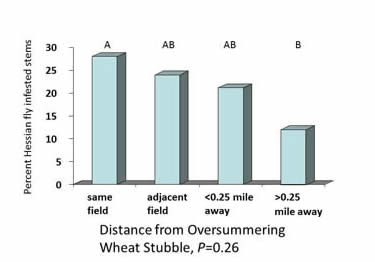
Planting Date
Historic Hessian "fly-free" planting dates to avoid fall damage
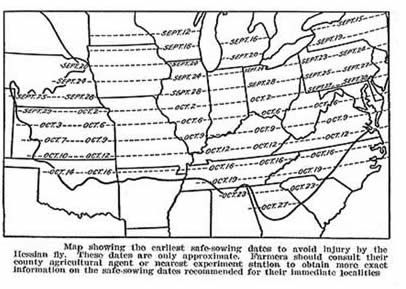
courtesy USDA ARS
Effect of Planting Date on Hessian Fly Infestation in Susceptible Winter Wheat at Plains, Georgia
| Planting | % Infested Tillers | ||
| Date | Dec. 5 | Feb. 9 | May 12 |
| Oct. 23 | 42 | 24 | 65 |
| Nov. 5 | 16 | 23 | 70 |
| Nov. 20 | 0 | 20 | 77 |
| Dec. 5 | -- | 2 | 70 |
Source: David Buntin, University of Georgia
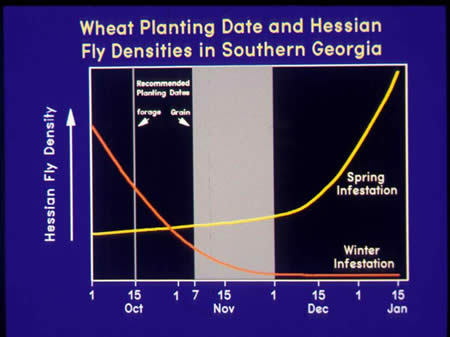
Control Volunteer Wheat
Volunteer wheat is an important resource for the first generation of Hessian fly. It should be controlled as soon as it emerges in the early fall.
Tillage and Burning
Effect of Moldboard Plowing on Hessian Fly Infestation in the Fall and Spring
| % Infested Tillers | ||
|---|---|---|
| Tillage Treatment | Fall | Spring |
| Plowing (fall and spring) | 8 | 40 |
| Plowing (fall only) | 7 | 44 |
| No-tillage | 23 | 43 |
Source: David Buntin, University of Georgia
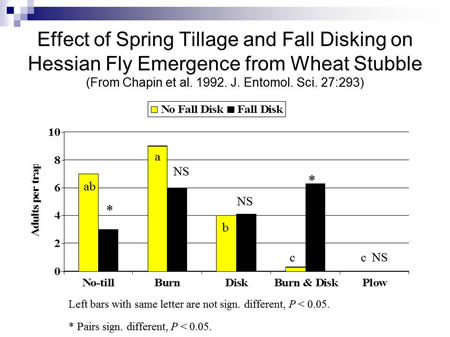
Slide courtesy David Buntin, University of Georgia

Slide courtesy of David Buntin, University of Georgia
Post Harvest Practices
Does anyone have data on movement of wheat straw?? Do we need any or is this just common sense?

 Menu
Menu


